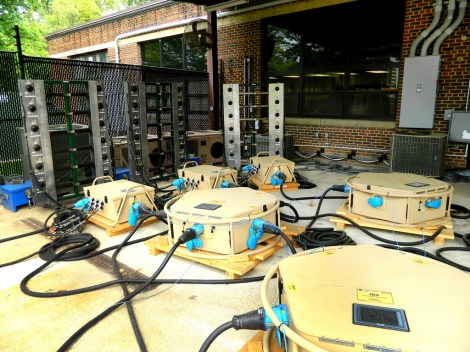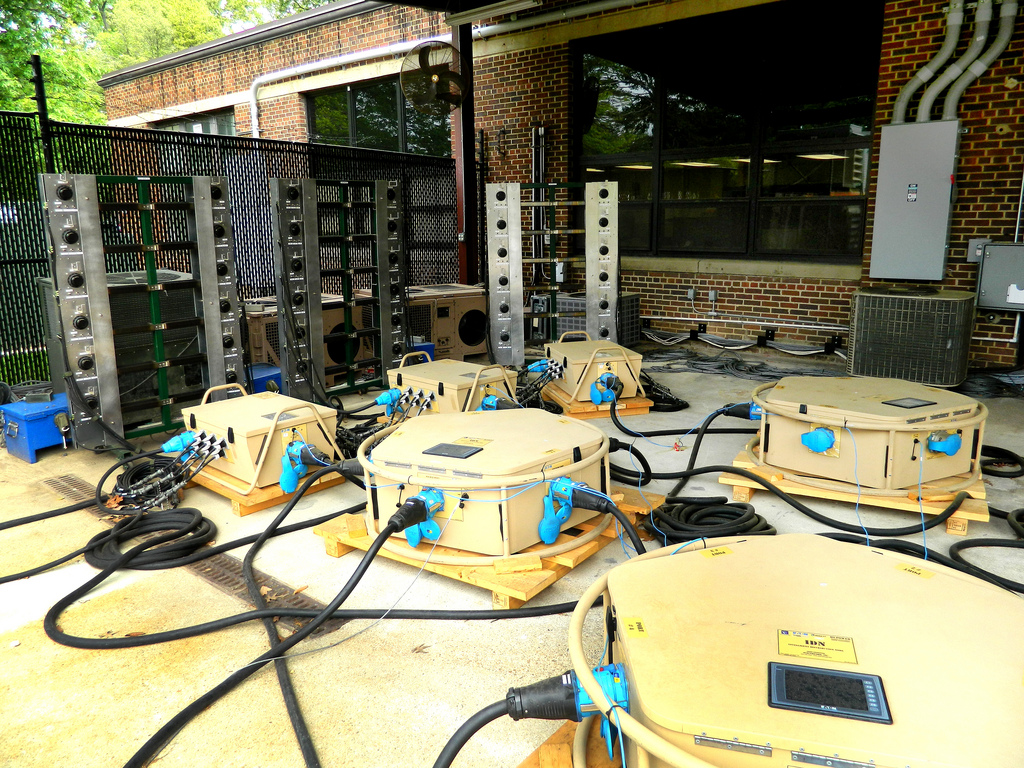Sandy may look bad now, but could it (and the other Frankenstorms before it) actually inspire change? If enough power goes down, if enough damage is done, if enough people demand it — well, maybe. But that change would be small. Micro, in fact.

rdecomAn Army microgrid.
Millions of East Coasters have already lost power this week and millions more stand to lose it in the coming days. Our reliance on central power plants and large grids has a lot to do with this. Enter microgrids, which can be detached and remain operational when the big boys fail. From The Connecticut Mirror:
A jargony techno-term, a microgrid is a small electric grid with its own generation source. It normally operates linked to the main electric grid, but when that suffers widespread interruptions, as Connecticut’s did during Tropical Storm Irene and the October snowstorm, a microgrid can automatically isolate itself and keep running.
“All the pieces have been tried that we need to put together,” said Dan Esty, commissioner of the state Department of Energy and Environmental Protection. “Just not at the scale we’re talking about.” The department has been ordered by Gov. Dannel P. Malloy to explore how the state would create microgrids to be better prepared in an emergency.
Forbes points to Connecticut’s past failures — “This one-two punch left some towns without power for nearly two weeks” — and what might be done differently nationwide.
A recent study conducted for the US DOE estimated that sustained power interruptions (over 5 minutes) cost the US over $26 billion annually. These issues are not going away, as the grid ages while demand grows. So clearly, there is ample justification for the reliability provided by micro-grids. The question is how to make them most economical and how to pay for them. Here; the local utility has a critical role to play, since micro-grids involve interconnections, safety concerns, and the economic issue of ratepayer equity. How costs and benefits are apportioned is important, but equally important are the necessary protocols for communication and coordination between micro-grid and grid.
While Forbes emphasizes the economic benefits of going small, others point to the smaller carbon footprint of microgrids and their ability to not just weather storms, but also conserve all manner of resources. From Galvin Power:
The microgrid approach focuses on creating a design and plan for local energy delivery that meets the exact needs of the constituents being served, whether a city, university, neighborhood, business park, or major mixed use development. At the local level, smart microgrids most efficiently and economically integrate consumers and buildings with electricity distribution and generation. Through smart microgrids, the economic and environmental benefits to consumers of the smart grid transformation are maximized, and are a significant multiple of the implementation costs, as described below … Microgrids enable consumers to meet some or all of their electricity needs by generating their own power, whether it is through sources like wind, solar, geothermal, microturbines and so on. This “bottom-up” consumer approach can reduce reliance on fossil fuels and lower greenhouse gas emissions based on open market economic value.
It may not be soon enough for Sandy, but maybe we’ll have more microgrid technology in time for the next climate-change-fueled eco disaster? At least we can hope and pray.



